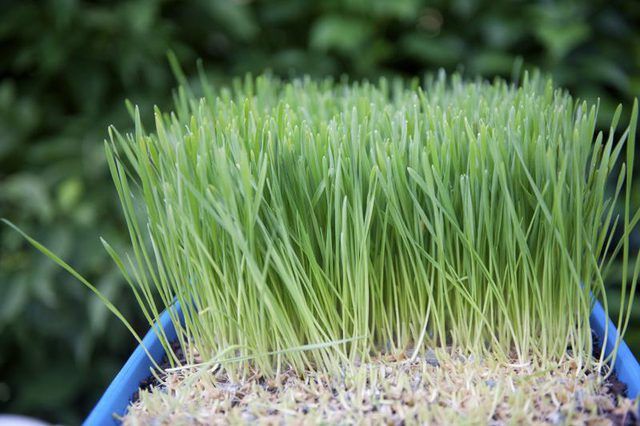Bulbs
Flower Basics
Flower Beds & Specialty Gardens
Flower Garden
Garden Furniture
Garden Gnomes
Garden Seeds
Garden Sheds
Garden Statues
Garden Tools & Supplies
Gardening Basics
Green & Organic
Groundcovers & Vines
Growing Annuals
Growing Basil
Growing Beans
Growing Berries
Growing Blueberries
Growing Cactus
Growing Corn
Growing Cotton
Growing Edibles
Growing Flowers
Growing Garlic
Growing Grapes
Growing Grass
Growing Herbs
Growing Jasmine
Growing Mint
Growing Mushrooms
Orchids
Growing Peanuts
Growing Perennials
Growing Plants
Growing Rosemary
Growing Roses
Growing Strawberries
Growing Sunflowers
Growing Thyme
Growing Tomatoes
Growing Tulips
Growing Vegetables
Herb Basics
Herb Garden
Indoor Growing
Landscaping Basics
Landscaping Patios
Landscaping Plants
Landscaping Shrubs
Landscaping Trees
Landscaping Walks & Pathways
Lawn Basics
Lawn Maintenance
Lawn Mowers
Lawn Ornaments
Lawn Planting
Lawn Tools
Outdoor Growing
Overall Landscape Planning
Pests, Weeds & Problems
Plant Basics
Rock Garden
Rose Garden
Shrubs
Soil
Specialty Gardens
Trees
Vegetable Garden
Yard Maintenance
How Long Does it Take to Grow Wheatgrass?
How Long Does it Take to Grow Wheatgrass?. Bright green annual wheatgrass (Triticum aestivum) is usually grown as a potted vegetable crop by home gardeners, usually for use in juices, smoothies or other beverages. It also grows well outdoors as a pet grass to give your cat or dog its own personal garden plot to graze, and this can help keep your...

Bright green annual wheatgrass (Triticum aestivum) is usually grown as a potted vegetable crop by home gardeners, usually for use in juices, smoothies or other beverages. It also grows well outdoors as a pet grass to give your cat or dog its own personal garden plot to graze, and this can help keep your pet out of the rest of the garden. Wheatgrass grows quickly when sown and cared for properly.
A Short Wait
Wheatgrass seeds germinate in as little as two days when sprouted in pots or trays. It takes the grass six to 10 days to reach harvest size. Cultural conditions can alter the average growing time. If the grass receives insufficient water or sunlight, it may grow more slowly or not develop its usual rich, green color. Plants grown outdoors in a garden bed, usually for pets, may take longer to germinate because it's more difficult to maintain even soil moisture during the sprouting stage. Usually, though, the grass will be ready within two to three weeks outdoors, even in less than ideal conditions.
Speed It Up
Soaking wheatgrass seeds before sowing helps speed germination, because soaking weakens the seed coat and allows moisture to reach the interior more quickly. This moisture is what signals the seed that it's time to start growing. Soak the seeds in a clean jar filled with clear, cool tap water. Wash the jar thoroughly with soap and water, and rinse well, to minimize the chance of mold growth or later damping-off problems. Soak seeds for eight to 12 hours before you plant them. The seeds will swell and the outer seed coating may begin to crack at the end of the soaking time.
Sowing Successfully
Fungal diseases are the main concern when you grow wheatgrass in containers. Disinfect all pots and tools before use by soaking them in a solution of 1 part bleach and 9 parts water for 30 minutes, and allow them to air dry before planting. Using a sterile potting mixture also prevents problems. Sow the seed heavily on top of the moist soil, using a pot with at least one drainage hole. The seed should nearly cover the soil surface in a single layer. Cover the seeds with a thin layer of soil, and mist them with water two or three times a day so the soil doesn't dry out, but also avoid overwatering and soggy soil. Use the same method for sowing directly in a well-drained, full-sun garden bed. Moist soil combined with full sunlight results in the fastest, healthiest growth.
Care and Cutting
Regular watering is all wheatgrass needs once it begins to grow. Water when the soil surface begins to dry out, and let pots drain completely afterward. Wet foliage can invite fungal problems. Water early in the day so the sun can quickly dry the foliage. Wheatgrass is ready for harvest when it grows to a 6-inch height. Disinfect your shears by wiping them with a cloth soaked in rubbing alcohol, and then cut off the grass just above the soil surface. The grass will regrow and be ready for a second harvest in one to two weeks if you don't cut into the crown or uproot it. You can usually harvest wheatgrass at least three times before you need to replant.